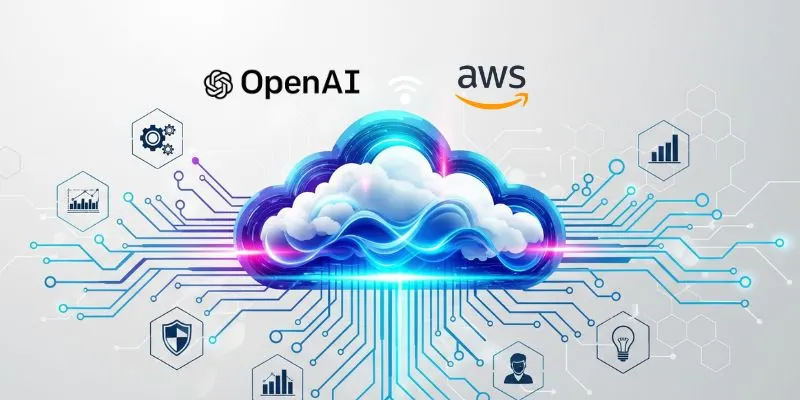What Does the OpenAI–AWS Partnership Mean for the Cloud AI Race?
Just when it seemed the cloud AI market couldn’t get more interesting, OpenAI and Amazon Web Services (AWS) announced a move set to shake up the tech landscape: OpenAI’s new gpt-oss-120b and gpt-oss-20b models are now available natively on AWS—for the first time ever. This strategic expansion offers AWS customers direct, flexible access to some of the most advanced open-weight language models on the market, ending years of Microsoft Azure exclusivity and driving a clear message: the cloud AI wars are far from over.
Why Is This Partnership Important Now?
OpenAI has long been synonymous with Microsoft, thanks to Azure’s exclusive access to OpenAI’s closed models and Microsoft’s multi-billion-dollar investment in the company. However, the launch of open-weight models—which allow organizations to access and customize the actual neural network weights—marks a major turning point.
By making these models available through AWS services like Bedrock and SageMaker, OpenAI is not only democratizing artificial intelligence (AI) access but also sidestepping restrictive licensing and broadening its reach to millions of new customers. This move directly counters the vendor lock-in concerns that have niggled at enterprises wary of being trapped in a single-cloud ecosystem.
What Are the Technical Capabilities of gpt-oss-120b and gpt-oss-20b?
These models are no lightweight releases:
gpt-oss-120b: A powerhouse with 117 billion parameters, optimized to run efficiently on a single H100 GPU. It’s built for production workloads that demand serious reasoning, coding, and multi-step agent tasks.
gpt-oss-20b: A more compact 21 billion-parameter model, designed for fast, cost-effective deployment—even on consumer hardware.
128,000-token context window: Both models support processing of extremely long documents and conversations, making them ideal for enterprise-scale use.
Configurable reasoning effort: You can tune the “effort” for reasoning based on your needs—low, medium, or high—which directly impacts cost, latency, and performance.
Agentic and tool-use capabilities: These models natively support chain-of-thought reasoning, function calling, code execution, and can even integrate with external tools.
Enterprise security: When deployed on AWS, you get the full benefit of enterprise-grade safeguards, like Guardrails that filter out up to 88% of harmful content.
How Does This Impact the Competitive Landscape?
Let’s call it what it is—a strategic play to break Azure’s AI stranglehold.
Leveling the field: While Microsoft still gets proprietary access to OpenAI’s flagships, AWS can now offer powerful OpenAI tech, eliminating a major reason some enterprise customers hesitated to use AWS for AI. And with OpenAI’s models available under the permissive Apache 2.0 license, expect broader and faster adoption.
Accelerated enterprise innovation: Enterprises love choice. Now, they can deploy, fine-tune, and run OpenAI models alongside models from Anthropic, Meta, Mistral, and more on the same platform.
Revenue impact: Analysts predict this partnership could boost OpenAI’s valuation and AWS’s competitive stance, not just for AI but for broader cloud adoption. OpenAI’s customer base grows massively; AWS enhances its portfolio and opens new revenue streams.
Pressure on Microsoft: Losing exclusive access will likely force Microsoft to double down on open-source efforts or renegotiate its OpenAI agreement.
What Use Cases and Industries Will Benefit?
Business agents: Automate complex business operations using agentic AI in finance, healthcare, and customer support.
Scientific and technical analysis: The models excel at mathematical reasoning and code generation, making them invaluable for research, engineering, and data-heavy industries.
Developer experimentation: With open weights, developers can now fully customize, fine-tune, and even audit the models to fit niche or regulated environments.
What’s Next for Open AI and AWS?
This collaboration arrives as both companies are under pressure to show innovation: Amazon to defend its cloud leadership, and OpenAI to expand beyond Microsoft as it pivots to a for-profit business model. Expect rapid enhancements—like custom model importing, knowledge bases, and more robust guardrails—in coming months.
Ultimately, the move is a call to action for any company not already exploring agentic AI: the tools are here, the barriers are down, and the pace of adoption just accelerated.
OpenAI’s venture onto AWS is more than a tech update; it’s a sign that the boundaries between AI, cloud, and competitive strategy are getting blurrier by the day. The real winners? Forward-thinking businesses ready to harness these new capabilities for innovation and growth.


